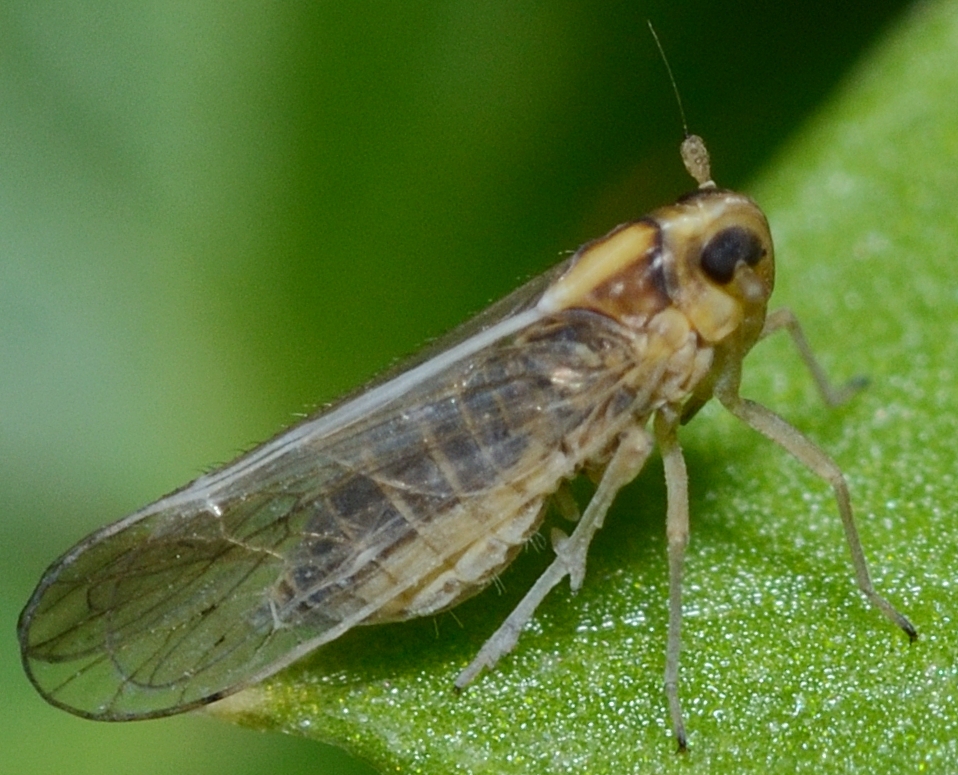| Comment: Known as a vector for Brazilian wheat spike disease (BWSV), Digitaria striate virus (DSV), and Maize sterile stunt virus (MSSV). Furthermore, old misidentified records of S. furcifera, a species that does not occur in the New World, have been added here under S. kolophon. (UDEL)
NOTE: This species could be confused with Muellerianella laminalis, as they both have a similar coloration. However, laminalis has a dark face while kolophon has a pale face. Additionally, C. Bartlett notes that kolophon is much more slender and less robust than Muellerianella, with a narrower and subtly projected head. Brachypters of Sogatella are rare at best while frequently found in Muellerianella.
This species could also be confused with the other and much less common member of this genus found in the state, S. molina, with very similar thoracic patterns/coloration. However, molina has a dark brown to black mark at the apex of the clavus on the wings, and has the genae darkened in males; in kolophon, the genae are pale.
Bartlett also notes that S. kolophon is likely a very mobile species; when it is abundant in North Carolina, this is likely a result of the population moving north. This would explain how the species can be abundant and widespread in the state but very uncommon most of the time. [Bartlett pers. comments] |

 »
»



 »
»

